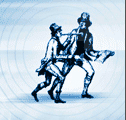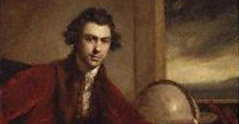|
COLONIAL DISCOURSES
Series One: Women, Travel & Empire, 1660-1914
Part 1: Early travel accounts by women, and women's experiences in India, Africa, Australasia and Canada
PUBLISHER'S NOTE
This new project explores the twin
themes of Women and Travel, and Women and Empire. This first part
brings together some 97 rare printed volumes by 41 women writers,
enabling scholars to explore themes such as:
The development of women’s travel
writing, 1662-1917
The evolution of a female aesthetic sensibility
The use of travel as a form of escape from traditional gender
roles
The ideology of Empire
Issues of identity - contrasts between imperial settlers and
first and second generation ‘colonials’ who begin to
develop a new national consciousness
Narratives of Empire and Anti-Empire
gender and colonialism
Part 1 starts with a section on early
travel writing by women, featuring works by 9 pioneers of the
genre. The earliest of these is Katharine Evans (d1692), a
Quaker missionary, who was imprisoned with her friend, Sarah
Cheevers, for 3 years in Malta by the Inquisition. Her Short
relation of some of the cruel sufferings .... (1662) recounts
their experiences and shows how they bore up through such
adversity.
Less exotic travel is described by Celia
Fiennes (1662-1741) in her posthumously published Through
England on a Side Saddle, which describes a journey she made
c1680. Fiennes lays the foundations for the guide-book as we know
it, which further develops in A companion and useful guide to
the beauties of Scotland and the Lakes (1799) by Sarah
Aust (1744-1811) and Travels in Italy, between 1792 and
1798 (1802) by Marianna Starke (1762?-1838).
Other early women travel writers featured
include Elizabeth Justice (1703-1752) (Voyage to Russia,
1739); Lady Mary Wortley Montagu (1689-1762) (Letters
... during her travels in Europe, Asia and Africa, (1763); Elizabeth
Anspach (1750-1828) (A journey through the Crimea to
Constantinople, 1789); Ann Radcliffe (1764-1823) (A
Journey, 1795); and Charlotte Eaton (1788-1859) (Narrative
of a residence in Belgium, 1817), in which Eaton describes a
visit to the field of Waterloo and revels in "English
greatness and glory," foreshadowing imperial attitudes.
These works are an essential preface to the
remainder of this project, establishing the foundations of the
genre and exhibiting many of the tropes that later reoccur.
The vast majority of Part 1 is composed
of women’s writing concerning the main seats of Empire:
Australasia, India, Africa, and Canada.
A dozen writers describe their lives and
experiences in India.
Eliza Fay (1756-1816) left England
for India in 1779. Her Original Letters from India (1817)
gives her views of suttee ("rules to render the weaker
sex subservient to authority") and details her
imprisonment in Calicut, her legal separation from her husband,
and her many schemes to make money and survive. Other early
accounts of life under the Raj are provided by Maria, Lady
Callcott (1785-1842) (Journals of a residence in India,
1812, and Letters on India, 1814) and Anne Katharine
Elwood (1800’s) (Narrative of a journey over land
from England by the continent of Europe, Egypt and the Red Sea to
India, incl. a residence there and voyage home, 1830).
Emily Eden (1797-1869) had a rather
privileged view of India, as her brother was Governor-General of
India. Her Letters from India (1872), Up the country
(1866) and Portraits of the Princes and Peoples of India (1844)
show India as it was seen through the eyes of the colonisers. The
breakdown of such authority is shown in A lady’s escape
from Gwalior, and life in the fort of Agra during the mutinies of
1857 (1859) by Mrs R M Coopland.
Some of the best accounts of life in India
in the 19th century can be found in novels written by residents
who could use the devices of fiction to satirize imperial society
and rule. Flora Annie Steel (1847-1929) is perhaps the
best known, but only a handful of her novels have been reprinted.
We offer eight novels and story collections as well as The
complete Indian housekeeper and cook, by two twenty year’s
residents (1890), which was also penned by her. Other
novelists featured include Charlotte Maria Tucker (1821-1893),
Bithia May Croker (1849-1920), and Sara Jeanette Cotes (1861-1925).
There are also anonymous advice books
concerning life in India and a History of the Society for
Promoting Female Education in the East (1847) detailing
missionary work.
Sources concerning life in Africa are
equally rich.
Accounts of the slave trade are given in Anna
Maria Falconbridge’s Two voyages to Sierra Leone,
during the years 1791-3 (1794), voyages in which she
accompanied her husband, the surgeon, Alexander Falconbridge.
Slightly later, Hannah Kilham (1774-1832) also provides a Report
on a recent visit to Sierra Leone (1828), describing a woman’s
experiences in the colony for freed slaves.
North Africa is the focus for Elizabeth
Broughton (1800’s)
(Six years residence in Algiers, 1839), Lucie Duff
Gordon (1831-1892) (Letters from Egypt, 1865, and Last
Letters, 1875), and Amelia Edwards (1831-1892) (Pharaohs,
fellahs and explorers, 1892, and other works).
Mary French Sheldon’s Sultan
to Sultan, adventures among the Masai and other tribes of East
Africa (1892) shows the tenacity of women explorers. This 41
year old American punted around lakes in the shadow of Mount
Kilimanjaro and braved primeval forests for the benefit of seeing
"the whisking myriad of monkeys" and hearing the
"hooting of white-hooded owls."
All four publications by Mary Kingsley (1862-1900)
are included, relating her travels in West Africa after she had
been freed from a life as a housekeeper and a nursemaid by the
death of her parents and her brother. A sensitive ethnologist and
naturalist, she did much to record tribal customs and beliefs. Florence
Dixie (1855-1905) also respected her African hosts and
courted controversy by siding with the Zulus against the
colonisers.
A less ecologically friendly journey is
recalled by Agnes Herbert in Two Dianas in Somaliland,
the record of a shooting trip (1908). Other items include
anonymous guides for missionaries and travellers in Africa and Pictorial
Africa (1891).
Many of the works relating to Australasia and Canada have a broader interest to those exploring
imperial themes. For instance, The ABC of colonisation (1850)
by Caroline Chisholm (1808-1877), and The female
emigrant’s guide (1854) by Catharine Traill (1802-1899),
are equally relevant to emigrants to India and Africa.
Over 15 volumes describe life from the
Australian outback to the backwoods of Canada. These include Colonial
Memories (1874) and Station Life in New Zealand (1891)
by Mary Anne Barker (1831-1911); Winter Studies and
Summer Rambles in Canada (1838) by Anna Brownell Jameson (1794-1860);
and Where the sugar maple grows (1907) by Adeline
Teskey (1850’s-1924).
Part 1 is rounded off with some
general works including A Turkish woman’s European
impressions (1913); Geography for little children (1880)
by Antonia Zimmern; accounts of the worldwide plant
expeditions of Marianne North (1830-c1880).
Finally, there is The handbook for girl
guides, or, How girls can help build the Empire (1912) by Agnes
Baden Powell.
These rare printed sources offer many
potential dissertation topics from the role of women in Empire to
their understanding of the lives of women of other cultures.
Colonial Discourses
Series One: Women, Travel and Empire, 1660-1914
Part 1: Early Travel Accounts by Women, and Women’s
Experiences in India, Africa, Australasia and Canada
< Back
|
|















